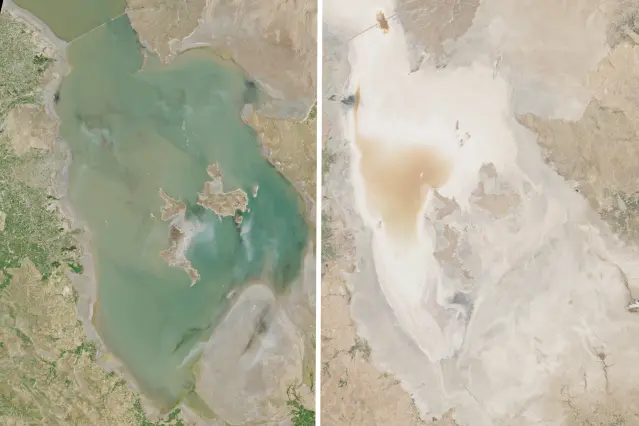-
They Seek to Curb Online Hate. The U.S. Accuses Them of Censorship. - 20 mins ago
-
L.A. terror plot alleged: What is the Turtle Island Liberation Front? - 37 mins ago
-
Inside the Oval Office - about 1 hour ago
-
Inside Nick Reiner’s legal defense against murder charges - about 1 hour ago
-
Macron Accuses Donald Trump’s US of ‘Intimidation and Coercion’ Over Visa Ban - 2 hours ago
-
ICE Sweeps Into Ohio, Stirring Fear Among Somalis and Other Immigrants - 2 hours ago
-
Oxnard still reeling from Glass House immigration raids, deportations - 2 hours ago
-
Blast Kills Three in Moscow Near Site of General’s Car Bombing - 3 hours ago
-
Youth Hostels, Blood Banks, Yoga: How One Far-Right Network Spread Across the World - 3 hours ago
-
China Is Shifting Its Nuclear Forces to Swifter Footing, Pentagon Says - 4 hours ago
Iran’s Capital Running Dry in Historic Water Crisis
A sharp decline in rainfall and reduced inflow to Tehran province’s dams have left a major reservoir with enough water to supply the capital for less than two weeks, the head of the regional water authority warned, according to Iranian media.
Behzad Parsa, Managing Director of the Tehran Regional Water Company, highlighted that inflow to Tehran’s dams has fallen by 43 percent compared to the previous water year.
Iranian president Masoud Pezeshkian said the government does not plan to cut water, electricity, or gas supplies to industries, despite declining rainfall in recent years.
Why It Matters
Widespread drought continues across Iran, putting millions at risk as the country faces one of the most severe water crises in modern history. Officials say this is Iran’s “driest autumn” in decades.
Reservoirs supplying Tehran and other urban centers have dropped to critically low levels, while agricultural production in the nation’s most fertile regions is collapsing, threatening food security and rural livelihoods.
Prolonged dry conditions, reduced rainfall, and declining inflows to dams, compounded by mismanagement and political disputes over water, have sparked public concern and, in some areas, protests.
What To Know
The Amir Kabir Dam’s water reserves decreased to 14 million cubic meters, hitting their lowest point in recent years, Parsa said Sunday in an interview with the Islamic Republic News Agency’s Persian platform (IRNA).
He added that inflow to Tehran’s dams has fallen by 43 percent compared to the previous water year, as a result of a 100 percent decline in rainfall and five consecutive years of drought severely pressuring the province’s water resources, casting doubts over the sustainable supply of the capital’s drinking water.
According to the Iran Wire online news outlet, the Amir Kabir Dam, one of Tehran’s main reservoirs, currently holds only enough water to supply the capital for less than two weeks.
The Persian platform also on Sunday quoted the head of Iran’s National Center for Climate and Drought Crisis Management, Ahad Vazifeh, as saying that recorded data show Iran is on the verge of experiencing “the worst autumn in 57 years” in terms of rainfall.
Iran’s water crisis has shrunk Lake Urmia, drained wetlands, stressed agriculture, and left rivers and aquifers across the country critically low. Satellite imagery showing the crisis surrounding Lake Urmia, once one of the world’s largest saltwater lakes, highlights the twin threats of climate change and chronic mismanagement that have plagued Iran’s water resources for decades.

What People Are Saying
President Masoud Pezeshkian, according to IRNA news website on Monday, said: “We have made every effort to ensure production continues and hope to get through this year with the least possible tension and problems—something that requires the cooperation of our dear people…We must seriously reconsider our consumption of water, electricity, and gas.”
Rama Habibi, head of production operations at Tehran Regional Water Company, on Monday, according to the Iranian Students News Agency (ISNA), said: “In the past 60 years, we have not experienced such low autumn rainfall in Tehran, and the current situation is unprecedented.”
Abbasali Mosarzadeh, CEO of Tehran’s Sewage Company, according to Iran International news website on October 1, said: “Rainfall has dropped 40% and dam inflows 42%, leaving most of the capital’s five dams near dead storage.”
What Happens Next
If rainfall does not improve, Tehran’s reservoirs will remain critically low, straining urban water supply and agriculture.
Source link










